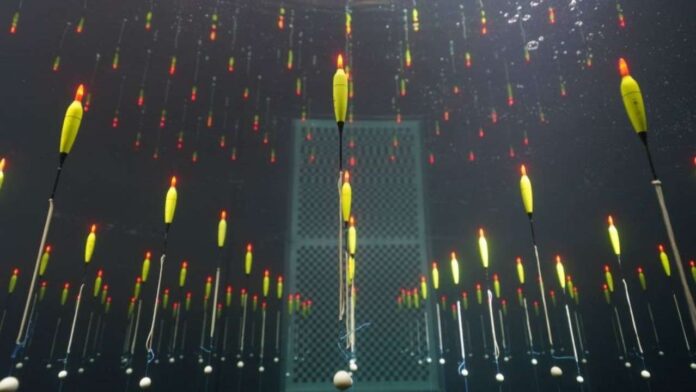China is embarking on a groundbreaking scientific endeavour by constructing the world’s largest neutrino telescope beneath the surface of the Western Pacific Ocean. Known as the Tropical Deep-sea Neutrino Telescope (TRIDENT), this ambitious project aims to capture elusive neutrinos and shed light on their cosmic origins. In this article, we will delve into the details of TRIDENT, its unique features, and the potential insights it may provide.
Neutrinos, often referred to as “ghost particles,” are subatomic particles with minimal mass and no electrical charge. These elusive particles pass through matter with little interaction, making their detection a formidable challenge. However, by slowing down neutrinos, scientists can trace their origins back to cataclysmic cosmic events, such as stellar explosions and galactic collisions.
TRIDENT, also known as the “Ocean Bell” in Chinese, will be anchored 11,500 feet (3,500 metres) below the ocean’s surface in the Western Pacific Ocean. By utilising the Earth as a shield, this underwater telescope will detect neutrinos penetrating from the opposite side of the planet. Its strategic location near the equator enables TRIDENT to receive neutrinos from all directions as the Earth rotates, allowing for all-sky observation without any blind spots.
The TRIDENT detector will consist of over 24,000 optical sensors distributed across 1,211 strings, each 2,300 feet (700m) long. These strings will be arranged in a penrose-tiling pattern, spanning a diameter of 2.5 miles (4 kilometers). Once operational, TRIDENT will scan an impressive 1.7 cubic miles (7.5 cubic kilometres) of seawater, making it significantly more sensitive than existing neutrino detectors.
Compared to the current largest neutrino detector, IceCube, located in Antarctica, TRIDENT’s monitoring area will be over six times larger. Its advanced photon-detection technology and large dimensions are expected to open new possibilities for diagnosing the origin of cosmic rays and probing fundamental physics over astronomical baselines.
Exploring Cosmic Origins and Testing Fundamental Physics
Beyond unravelling the mysteries of neutrinos, TRIDENT’s mission extends to exploring the origin of cosmic rays, testing space-time symmetries, searching for quantum gravity, and indirectly probing dark matter. This underwater telescope is poised to provide valuable insights into the extreme universe and improve our understanding of the fundamental building blocks of the cosmos.
The TRIDENT project is set to commence its pilot phase in 2026, with a small-scale array expected to be completed by that time. This initial stage will serve as a testing ground for the key technologies underpinning the project. The full deployment of the TRIDENT detector is anticipated in 2030, marking a significant milestone in China’s scientific endeavours.
China’s commitment to constructing the world’s largest underwater neutrino telescope, TRIDENT, demonstrates its dedication to pushing the boundaries of scientific exploration. By capturing and studying elusive neutrinos, TRIDENT aims to unlock the secrets of cosmic origins and probe the fundamental nature of the universe. This groundbreaking project promises to contribute invaluable knowledge and propel our understanding of the cosmos to new heights.
So brace yourself for the unveiling of TRIDENT, China’s monumental contribution to the field of astrophysics. The world waits with bated breath for the discoveries and breakthroughs this remarkable underwater telescope will bring.
